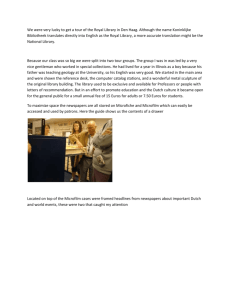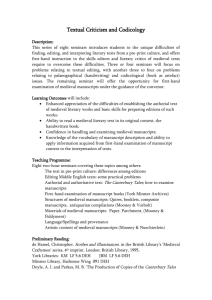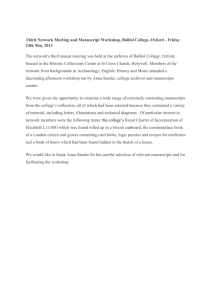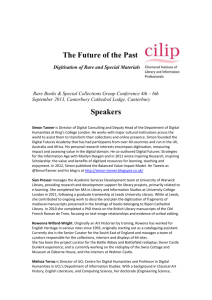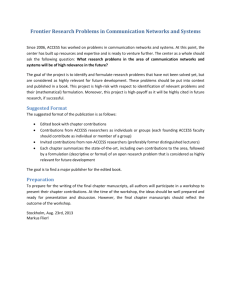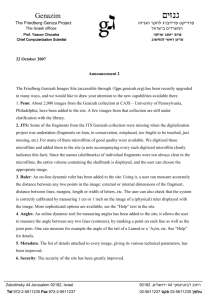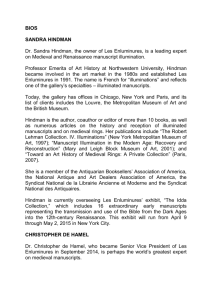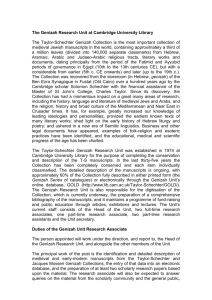Good Stuff for Medievalists: Digital Humanities Collections on the
advertisement
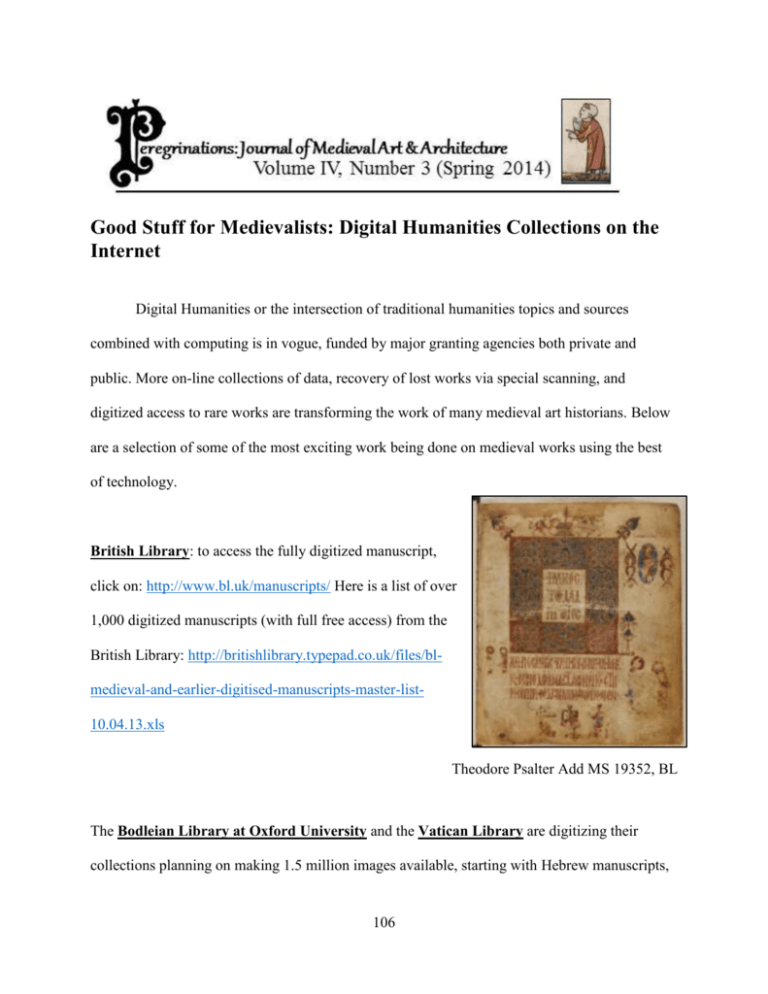
Good Stuff for Medievalists: Digital Humanities Collections on the Internet Digital Humanities or the intersection of traditional humanities topics and sources combined with computing is in vogue, funded by major granting agencies both private and public. More on-line collections of data, recovery of lost works via special scanning, and digitized access to rare works are transforming the work of many medieval art historians. Below are a selection of some of the most exciting work being done on medieval works using the best of technology. British Library: to access the fully digitized manuscript, click on: http://www.bl.uk/manuscripts/ Here is a list of over 1,000 digitized manuscripts (with full free access) from the British Library: http://britishlibrary.typepad.co.uk/files/blmedieval-and-earlier-digitised-manuscripts-master-list10.04.13.xls Theodore Psalter Add MS 19352, BL The Bodleian Library at Oxford University and the Vatican Library are digitizing their collections planning on making 1.5 million images available, starting with Hebrew manuscripts, 106 Greek manuscripts, and 15th-century incunabula. Because the fragility of the manuscripts, they are using a special imaging technique: http://bav.bodleian.ox.ac.uk/news/imaging-techniques-atthe-bodleian For further information and access, see: http://bav.bodleian.ox.ac.uk/ Greek Bible Reginensis Graecus 1 held at Biblioteca Apostolica Vaticana, 10th century The Bodleian Library at the University of Oxford is also making available digitized images of the incredible collection from the Cairo Genizah: http://genizah.bodleian.ox.ac.uk/ Maimonides’ autograph draft of his legal code, Mishneh Torah (from the Cairo Genizah), in cursive Sephardic script (Egypt, c. 1180), Bodleian Library 107 More focused on a particular topic is the 100,000+ images found on the site from the Wellcome Trust, a leading British health organization. Many of these are from the Middle Ages and the images are being released under the Creative Commons Attribution license, allowing users to freely copy, distribute, edit, manipulate and build upon as they wish, and are available for personal or commercial use. See http://wellcomeimages.org/ Bloodletting man in center of circle of the zodiac, MS 49, folio 41r, c. 142030, Wellcome Trust 108 Wroclaw University Library in Poland is digitizing nearly 800,000 pages of European manuscripts, books, and maps dating back to the Middle Ages, including over 1100 medieval manuscripts. Treasures to be digitized include: the 1475 Statuta synodalia episcoporum Wratislaviensium with everyday prayers printed for the first time in Polish, the 1504 Legenda major de Beata Hedwigi, and thousands of old printed maps, including the Portolan Atlas by sixteenth-century cartographer Battista Agnese. http://www.bu.uni.wroc.pl/en The Great Missal, Church of Mary Magdalene in Wroclaw, c. 1470, Wroclaw University Library Adding to these libraries and their great collections are specialized projects that focus on single masterpieces, such as the Book of Kells online, http://digitalcollections.tcd.ie/home/index.php?DRIS_ID=MS58_003v 109 Other specialized databases make available personal collections of photographs taken by such medievalists as Andre Chastel and others, http://www.centrechastel.parissorbonne.fr/gallery/images-darchitecture-etsculpture-romanes-despagne Barcelona (Région de Catalogne, province de Barcelone), Portal of the Church of SaintMartin de Sarroca, 12th-13th centuries There are also excellent secondary sources on medieval art available for free downloads: http://www.digitalbookindex.org/_SEARCH/search010areamedievalarta.asp and for a festival of medieval sites on the internet, see http://mittelalter.hypotheses.org/1023 110 While these developments are exciting and potentially field-altering, they are found in disparate places. To remedy this, the Medieval Electronic Scholarly Association is slowly bringing together these many sites and databases. http://www.mesa-medieval.org/ Currently one can access such databases (images and texts) as the Gothic Ivories Project and the Roman de la Rose Digital Library all backed up with a metadata supported search engine. See http://peregrinations.kenyon.edu/vol4_3/DavisPeregrinations43.pdf 111
